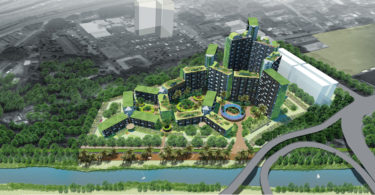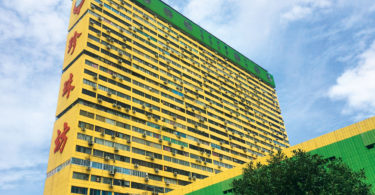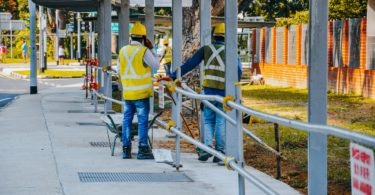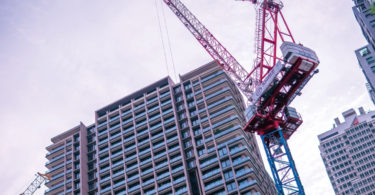“Faced with a slowing economy, the built industry—which is a key economic driver capable of boosting market performance—needs to rev up innovative, efficient and cost-effective industrialised building systems (IBS) that can improve and save on the building cost of affordable housing.” BY YOONG MEI CHING
The construction industry, defined as the sector of national economy that deals with and is engaged in the preparation of land and construction as well as alternation and repair of buildings, structures and other aspects of real property is, in many respects, a key economic driver that is capable of boosting market performance. In other words, by establishing the infrastructure that is essential for socio-economic development, the construction industry makes its mark as a significant major contributor to the overall economic growth of a nation.
Although the construction industry has the power to change and contribute towards a positive impact on the built sector, its existence and influence in turn, depends on how adept it is in responding to the changes in demand facing the country, even as the nation moves towards achieving the Vision 2020 status of becoming a developed and industrialised nation— progressing from the developing country status.
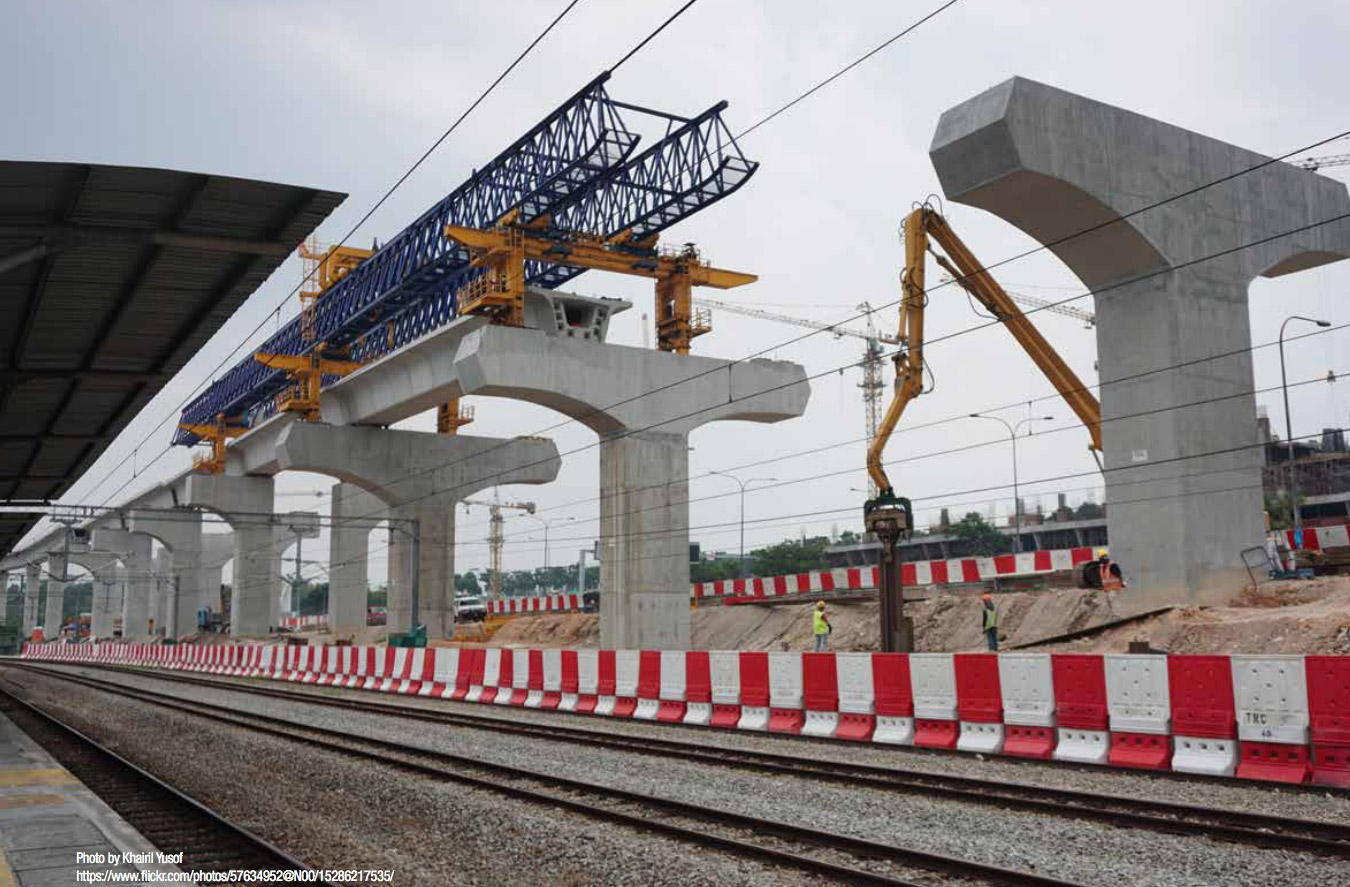
The vision that was set in place as far back as 1991, brought along with it major changes as reflected in the acceleration of the projects undertaken by the construction industry. This could be seen in large-scale infrastructure developments—such as residences, commercial buildings, industrial premises, educational institutions, hospitals—that mushroomed all over the nation and resulted in the boom of the construction industry in meeting the demands of a rising population.
While this may have been the case previously, the recent clouds of uncertainty hovering over the nation have certainly changed the game plan of the construction industry. No longer can the construction industry take for granted and depend on the earlier years of unchartered growth and progress. Now, faced now with a slowing economy, with strong headwinds coming from all directions as crude oil prices take a tumble amid the rising cost of living having an impact on the decision to purchase property, even the construction industry has to rethink its strategy. After all, the construction industry is also not spared of the rising cost of construction and building materials brought about by the accumulated effects of the goods and services tax (GST) since its implementation in April 2015. This has both a direct and indirect impact on the construction industry.
In addition to this, the proposed 100-percent levy hikes on foreign workers that were largely debated have added to the unprecedented and persistent problems facing the construction industry, such as increasing levy hikes. In the face of a noticeable slowdown in property launches by developers who are adopting a wait-and-see attitude, with people spending cautiously and loan rejections being at an alltime high due to the strict Loan-to-Value (LTV) ratio with foreign investments flowing out of the country, the construction industry may well be facing an unprecedented perfect storm.
With the price of construction materials and developers pulling back on new launches resulting in lesser properties being built, the clarion wake-up call may be upon the construction industry to make urgent, necessary changes in order to adapt to market demands and what is turning out to be an unyieldingly slow market economy. Amidst the gloomy sentiments, the proverbial silver lining could perhaps be identified as a series of innovations in improved delivery and products that could navigate the construction industry out of the current economic uncertainty
IBS: the way forward
In order to boost the construction industry faced with ongoing problems such as labour shortage, levy hikes on foreign workers and rising cost of building materials, innovative measures are needed to address these challenges facing the market today.
One logical way is to encourage and incorporate the use of IBS in speeding up delivery in shorter time frames, while not compromising on quality. In fact, working on efficient measures to expand operational output in order to meet demands is of pivotal concern. After all, logic dictates that a high level of quality control also aids in helping to lower the total construction cost.
Competent IBS systems can add to the fears of training a ready pool of IBS professionals and workers who are adept at working their way through the entire project life cycle—handling a myriad of tasks from design and manufacturing to building and ongoing maintenance. Essentially, the role of IBS is becoming more significant, showcasing that the implementation of IBS components in controlled environments can ensure that various building components conform to stringent quality assurance requirements and standards demanded by the industry.
Innovation can bring about the introduction of better quality materials while saving time on construction, as IBS allows and enables industrial quality finishes and low wastage. This leads to easy site management and lower pilferage. Environmentally safe products can be recycled in the long term, adding to the objective of preserving the planet for future generations, hence rendering sustainability as another component being considered relevant by the construction industry.
The emerging importance of IBS was showcased at several built industry exhibitions held recently, including the International Construction Week (ICW)/Ecobuild 2016 exhibition. A key indicator of the importance attached to the construction industry was reflected in the participation of more than 100 local and international exhibitors. Its ability to attract over 10,000 visitors to the Kuala Lumpur Convention Centre was another benchmark of its success. The size of the ICW/Ecobuild 2016 exhibition—organised by United Business Media (UBM) and hosted by the Construction Industry Development Board (CIDB)—commanded a similar size in terms of exhibition space as compared to last year’s exhibition held at the Putra World Trade Centre. Next year’s exhibition is expected to be even larger.
In a similar light, the ICW/Ecobuild 2016 exhibition was co-located with the third edition of Ecobuild Southeast Asia, which caters to sustainable design, construction and the built environment. Here, the IBS Housing Expo took centre stage, showcasing new products and technology suited for the construction of affordable housing.
Recognising that driving productivity is key in the construction industry, Winson Chang—technical director of ROXSIL Silicone Sdn Bhd—said the company’s IBS product and technology provide sustainable design solutions that can cater to the construction of affordable homes with quicker turnaround time, while not compromising on quality.
Well aware that affordable housing has become a major challenge for those in Malaysia and the region, Chang armed himself with a vision and mission to make affordable, high-quality homes a reality. Digging up years of accumulative research and trials, and striking up a close collaboration with Professor Dr Lee Yee Loon as Technical Advisor to provide engineering support, Chang set out to put together the first in his series of technological breakthroughs for the construction industry.
The patent-pending ROXSIL AAC Wall Installation System (see sidebar 2) which soft-launched at the ICW/ECOBUILD 2016 exhibition at the Kuala Lumpur Convention Centre on 12–14 April, garnered overwhelming responses from government ministries, private local and overseas construction trade and social enterprises.
Another example of such a technology is the BubbleDeck biaxial system (see sidebar 3). These examples of IBS products and technologies at work bode positively for an industry struggling with housing shortage, while dealing with the burgeoning cost of materials aggravated by shortage of labour. Commenting that the theme of driving productivity in construction is in line with his company’s aspiration to leverage on the Construction Industry Transformation Programme (CITP), he maintained that “IBS is the way forward in leading the industry to deliver the best quality within the shortest time.”
Making affordable housing a reality
The ROXSIL team aspires to play a role in the country’s nation building by supporting the government’s aim to promote IBS, a construction process which utilises techniques, products, components or building systems that involve prefabricated components and on-site installation.
The ROXSIL AAC Wall System goes beyond the conventional AAC block masonry by directly addressing the common problems of time-consuming and labour-intensive construction, especially in the midst of today’s challenging economy.
 “It addresses the issues of wall cracks and water seepage which have plagued the industry for years. It is very easy and quick to install, requiring only AAC blocks and a tube of ROXSIL AAC Adhesive,” said ROXSIL technical advisor Professor Dr. Lee Yee Loon, a passionate proponent of water-resistant crackless concrete wall and carbon sequestration methodology throughout Asia.
“It addresses the issues of wall cracks and water seepage which have plagued the industry for years. It is very easy and quick to install, requiring only AAC blocks and a tube of ROXSIL AAC Adhesive,” said ROXSIL technical advisor Professor Dr. Lee Yee Loon, a passionate proponent of water-resistant crackless concrete wall and carbon sequestration methodology throughout Asia.
This wall system is the first of its kind, which adopts German and American technologies and is made in Malaysia by ROXSIL, a local company spearheaded by technical director Winson Chang in close collaboration with Lee.
“IBS in itself is not new in Malaysia. Many worldclass Malaysian developers have chosen IBS Making affordable housing a reality over the conventional methods for important projects which have to be completed in a short time,” explained Chang. However, the early efforts of the government to encourage the use of IBS in the construction sector have yet to gain much traction. In order to propagate the use of this system amongst construction professionals, the company plans to initiate training to ensure proper use of equipment and application. The company also has plans to establish a training academy in the future.
 Tried and tested solutions to common AAC Block problems
Tried and tested solutions to common AAC Block problems
Autoclaved Aerated Concrete (AAC) blocks have a semi-IBS rating and are one of five components making up the full IBS system. AAC blocks are a type of concrete containing around 60 percent air. These special concrete blocks have a number of advantages: strong; light; provide better sound and unmatched thermal insulation; as well as highly resistant to sun, wind, fire, rain, sound, termites and other pests. With AAC blocks, the tedious and timeconsuming traditional bricklaying tasks can be greatly simplified.
However, the AAC block also has its problems. Water absorption tends to be higher resulting in water seepage in the structure. This in turn will lower the compressive strength of the walls and induce cracks.
The breakthrough AAC wall system by ROXSIL Silicone overcomes common problems and delivers the fastest, easiest construction available today. It offers a 20 to 30-percent reduction in materials and labour costs compared to conventional wall building methods.
Designing with BubbleDeck: the biaxial system
BubbleDeck is based on a new patented technique—the direct way of linking air and steel resulting in a dramatic reduction of structural dead weight. The void formers in the middle of a flat slab eliminate 35 percent of a slab selfweight removing constraints of high dead loads and short spans, while recycled plastic bubbles are incorporated as void formers permit 50 percent longer spans between columns.
This combination of a flat slab construction approach spanning in two directions with the slab being connected directly to in-situ concrete columns without any beams produces a wide range of cost and construction benefits. These highlights include design freedom, enabling the flexible layout to easily adapt to irregular and curved plan layouts, while reducing dead weight by approximately 35 percent allows for smaller foundation sizes. The longer spans between columns of up to 50 percent further than traditional structures as well as downstand beams being eliminated result in quicker and cheaper construction of walls and services. Designing with BubbleDeck: the biaxial system Meanwhile, with the load bearing walls eliminated, this facilitates MMC with lightweight building envelopes. Coupled with reduced concrete usage of approximately 1 kilogram recycled plastic replacing 100 kilograms of concrete and environmentally Green and sustainable implementation, this results in reduced energy and carbon emissions.
The ‘bubble-reinforcement’ sandwich effect, which is then cast into the bottom layer of precast concrete, ensures that the bottom mesh reinforcement will be able to provide permanent formwork within part of the overall finished slab depth. On-site, the individual elements are then stitched together with loose reinforcement simply laid centrally across the joints between elements. Splice bars are inserted loose above the precast concrete layer between the bubbles and purpose made mesh sheets tied across the top reinforcement mesh to join the elements together. After the finishing concrete is poured and cured, this technique provides structural continuity across the whole floor slab—the joints between elements are then redundant without any structural effect—to create a seamless floor slab.
BubbleDeck has proven to be highly successful in Europe since its invention 10 years ago. In Denmark and Holland, over 1 million square metres of floors have been constructed in the last seven years using the BubbleDeck system in all types of multistorey buildings. BubbleDeck is a simple solution that eliminates non-working dead load in floors while fully retaining strength, resulting in faster construction time, greater flexibility, improved environment and better performing total economy. This leads to valueadded benefits for the overall construction industry.

YOONG MEI CHING has been covering industry-related news in both the property and related real estate sectors for several years. Besides writing on the property market and its related sectors such as construction, she has also had her fair share of writing for various lifestyle publications related to the interior design and architecture aspects of the business. She has interviewed prominent local and international architects and interior designers, as well as both local and foreign developers in the course of her work.





